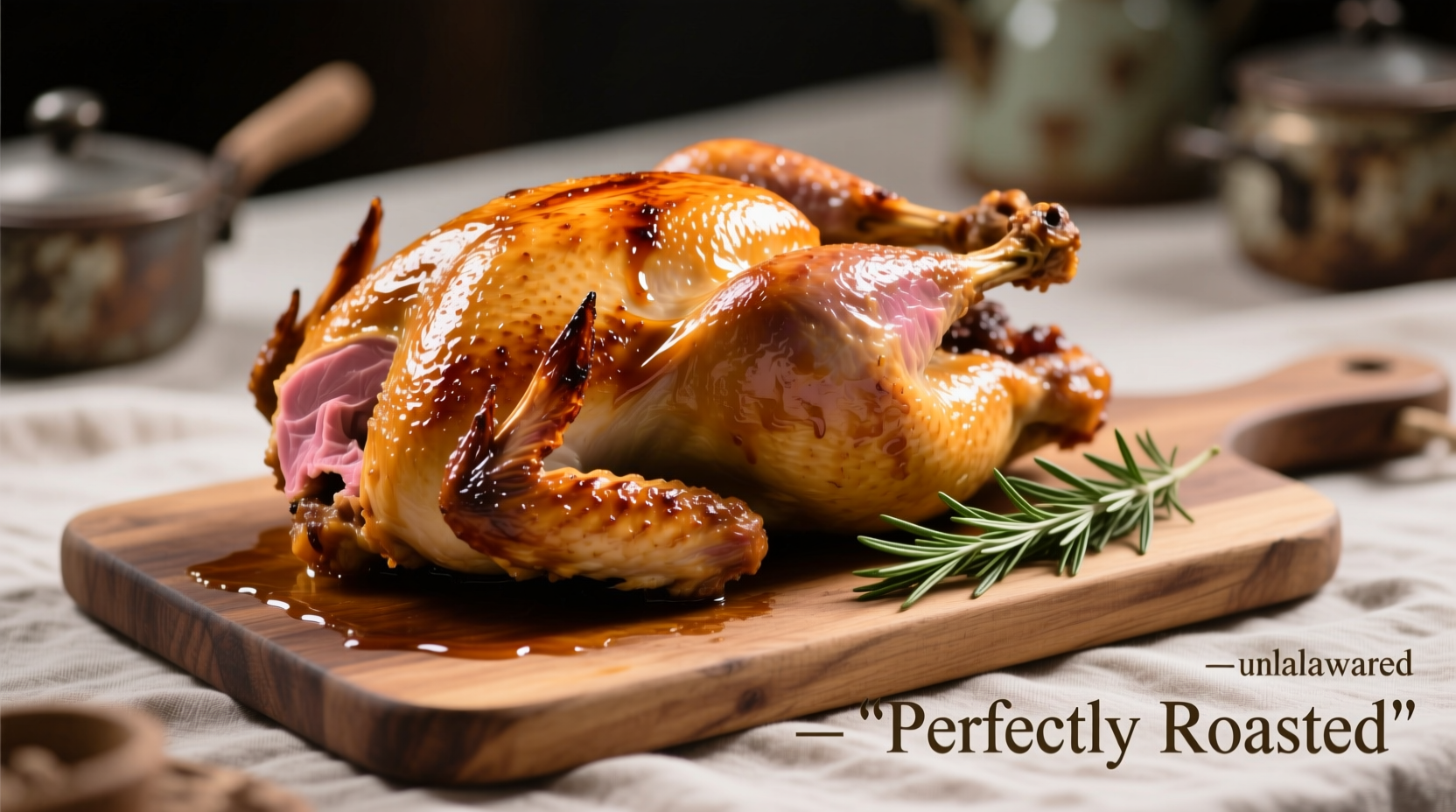Preheat oven to 325°F (165°C). Prepare 3-5 lb turkey breast by removing packaging, patting dry, and seasoning. Place on rack in roasting pan, breast side up. Roast until internal temperature reaches 165°F (74°C) at thickest part, typically 1.5-2 hours. Let rest 15-20 minutes before slicing for moist, flavorful results.
Perfectly cooked turkey breast should be juicy, flavorful, and safe to eat—no more dry, stringy meat. This comprehensive guide delivers restaurant-quality results with foolproof techniques backed by food science. You'll learn exactly how to achieve golden-brown skin, tender meat, and proper food safety every time, whether you're preparing a weeknight dinner or holiday centerpiece.
What You Need Before Starting
Before you even preheat your oven, gather these essentials for success. A 3-5 pound bone-in turkey breast works best for even cooking—boneless cooks faster but dries out more easily. You'll need a reliable meat thermometer (critical for food safety), roasting pan with rack, aluminum foil, and basic seasonings. According to USDA Food Safety and Inspection Service guidelines, poultry must reach 165°F internally to eliminate harmful bacteria like salmonella.
| Cooking Method | Best For | Internal Temp | Moisture Retention |
|---|---|---|---|
| Oven Roasting | 3-5 lb turkey breasts | 165°F | ★★★★☆ |
| Sous Vide | Precision cooking | 150-155°F | ★★★★★ |
| Grilling | Smoky flavor | 165°F | ★★★☆☆ |
| Slow Roasting | Extra tender results | 165°F | ★★★★☆ |
Gathering Ingredients and Equipment
For optimal flavor and texture, choose a fresh (not frozen) turkey breast when possible. Thaw frozen turkey in the refrigerator 24-48 hours before cooking—never at room temperature. Essential equipment includes:
- 12-14 inch roasting pan with V-rack
- Digital instant-read thermometer
- Butcher's twine (for trussing)
- Meat baster or silicone brush
- Aluminum foil
Basic seasoning blend: 2 tsp salt, 1 tsp black pepper, 1 tsp garlic powder, 1 tsp onion powder, ½ tsp paprika. For herb variation, add 2 tbsp chopped rosemary and thyme.

Preparing the Turkey Breast
Remove all packaging and pat the turkey breast completely dry with paper towels—this critical step ensures proper browning. If using a bone-in breast, check for any remaining pin bones with your fingers. Loosen the skin gently by sliding your fingers between skin and meat, being careful not to tear it. Rub ⅓ of your seasoning blend directly on the meat under the skin, then massage remaining seasoning over the skin surface.
For even cooking, bring turkey to room temperature for 30-60 minutes before roasting. This reduces cooking time and prevents the exterior from overcooking while the interior reaches safe temperature. The FDA recommends never leaving poultry at room temperature longer than 2 hours to prevent bacterial growth.
The Roasting Process
Preheat oven to 325°F with rack positioned in the center. Place turkey breast side up on the roasting rack. Insert thermometer into thickest part, avoiding bone. Roast uncovered for 60-90 minutes depending on size—calculate approximately 20 minutes per pound.
After 45 minutes, baste with pan juices or melted butter every 20 minutes. When internal temperature reaches 150°F, loosely tent with foil to prevent over-browning. Continue roasting until thermometer reads 165°F in multiple spots. Remember: turkey continues cooking while resting, so remove it 5 degrees early.
Resting and Slicing Techniques
Transfer turkey to cutting board and tent loosely with foil for 15-20 minutes—this critical resting period allows juices to redistribute. Never skip this step; cutting too soon releases precious moisture. During resting, temperature will rise 5-10 degrees to reach perfect 165°F.
For clean slices, cut against the grain with a sharp carving knife. Angle your knife slightly and use smooth, confident strokes. Serve immediately with pan drippings as natural gravy. Leftovers stay moist for 3-4 days when stored properly in airtight containers.
Common Mistakes to Avoid
Many home cooks make these critical errors: skipping the meat thermometer (guessing doneness leads to dry or unsafe meat), not drying the skin thoroughly (prevents proper browning), and cutting too soon after cooking (releases juices). The American Heart Association recommends using herbs and citrus instead of excess salt for heart-healthy preparation.
Oven cooking works best for standard 3-5 pound turkey breasts but has limitations—very large breasts (over 6 pounds) may cook unevenly in standard ovens. For holiday meals with multiple side dishes, oven space constraints might make alternative methods preferable. Always verify doneness with a thermometer, not just cooking time.
Perfect Pairings and Serving Suggestions
Serve with roasted vegetables like carrots and Brussels sprouts cooked in the same pan for easy cleanup. Classic sides include mashed potatoes, cranberry sauce, and green bean casserole. For wine pairing, choose medium-bodied reds like Pinot Noir or dry Riesling. Leftover turkey makes exceptional sandwiches, salads, and soups throughout the week.











 浙公网安备
33010002000092号
浙公网安备
33010002000092号 浙B2-20120091-4
浙B2-20120091-4